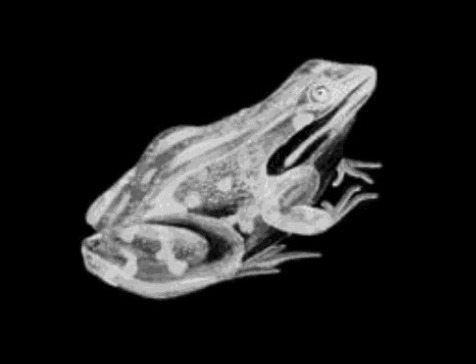Album ’80: Harajuku Youth Records









Album ’80 原宿青春録
by
水田 稔╱Minoru Mizuta
Tokyo, 1980—Harajuku had turned from a postwar fringe into a public stage. After Washington Heights was returned and the 1964 Olympics reshaped the area, Sundays became rituals of being seen—from dance groups like Takenoko-zoku to flamboyant self-styling. Within Camera Mainichi’s “Album ’80,” Minoru Mizuta built a portrait method that relied not on instant film but on time and return: shoot → print → find the sitter again → reshoot with the previous print in hand—weeks later, repeat.
Each page nests “six weeks ago,” “three weeks ago,” and “now,” turning portraiture into a temporal device for self-performance. The work braids postwar urban memory, youth subculture, and the magazine’s public platform—one reason Japanese photo culture of that era remains so singular.
P.S. I’ve also placed a passage from the magazine below and translated it into English and Traditional Chinese.
水田稔「原宿青春録」(P23〜31)。
みずた・みのる、1947年千葉県鴨川市生まれ。関東写真実技学校卒、日本電信電話公社勤務。
『昼の休みになると、皇居の周囲約5キロを一周、体調がよければ二周するというパターンが、ここ五年続いている。なぜランニングかというと、「スタミナ養成 気力充実」「ストレス解消 気分転換」、そしていい写真が撮れそうな気がしてきたらしめたものだ。編集部のある毎日新聞社前を通過するたび「来月はアルバム80に」なんて思ったりして。今回の作品、平均年齢十六歳の彼女らに負けずに、ボクもバリバリ。だけどやめてよ!「おじさん」て呼ぶのは。※バリバリ=Best, Exciting, Fantastic.』
————
水田稔「原宿青春録」はいうところのタケノコ族というのであろう。英雄、不恋達、パジャマ、怒羅絵門、妖貴妃、はじめ何やら見当がつかなかったが呪文を唱えるごとく、鮒の念仏のごとく口中でぶつぶついっていたらたちどころに判明した。そういうネーミングのグループがあるのである。と断言していいかどうかわからないが、あたらずといえども遠からず、この言葉は四書の一つ『大学』にある。「心誠に之れを求むれば中らずと雖も遠からず」。そんなことはどうでもいいが、原宿青春族には鹿鳴館調あり、竹久夢二調あり、レニ・リーフェンシュタール・ヌバ族風あり、アルプスの少女ハイジ調あり、北方騎馬民族末裔調あり、プロテニスナンバーワン・スウェーデンボルグ鉢巻調、ジュリーへんてこ眼鏡調、民主人民共和国調とまことに多彩、いずれもユニーク、物真似にしても個性の発現あって、いまの少女たちのファッションセンスは実に端倪すべからざるものがある。しかもそのファッションの不調和と、それを賛美する寛容の精神、ここには麻薬的な甘美な、そうして底抜けにばかげて明るいニヒリズムがあるのだ。と私は思うのだが、そんなことより、いま写っている女の子が持っている三週間前の彼女の写真のなかに六週間前の彼女が写っているといったこの魔術的仕掛けが実は大変だったと思うのである。ポートレート写真を一枚写して、それを持って原宿をウロッキまわり、やっとこさ彼女を見つけて、その写した写真を持ってもらってまたシャッターを切って、それからまた原宿に立ちあらわれてメイクの少し変わった彼女をやっとこさ見つけてまた写して……こういうのを仏教のほうでは「無間」の地獄といって、苦悩が間断なく襲いかかってくる世界である。本来なら大釜に煮えたぎる熱湯に墜ちて絶えず苦しみを受けるところなのだが、ここにあるのは現世極楽、欣求浄土の思想であって、こういう少女像、あまり美女像ともいえないが、そういうものにめぐりあえるというのも善業を積んだ善の果報であろうか。—田中雅夫
Minoru Mizuta, “Harajuku Youth Records” (pp. 23–31).
Mizuta Minoru, born in 1947 in Kamogawa, Chiba Prefecture. Graduated from Kanto School of Practical Photography; employed by Nippon Telegraph and Telephone Public Corporation.
“During my lunch break I run once around the Imperial Palace—about five kilometers—and if I feel good, I do two laps. I’ve kept this routine for the past five years. Why running? ‘To build stamina and charge my spirits,’ ‘to relieve stress and change my mood,’ and if I start to feel I might take good pictures, all the better. Every time I pass in front of the Mainichi Newspapers building where the editorial office is, I catch myself thinking, ‘Next month, I’ll be in Album ’80.’ For this series I’m just as fired up as the girls—whose average age is sixteen—no less than they are. But please don’t call me ‘ojisan’ (uncle). ※Baribari = Best, Exciting, Fantastic.”
————
Mizuta Minoru’s “Harajuku Youth Records” is, as people say, about the Takenoko-zoku. “Heroes, furen-tachi (delinquent kids), pajamas, Doraemon, demon-queen…”—at first I couldn’t make heads or tails of it, but as I kept mumbling the names like an incantation, like reciting the nembutsu, it suddenly became clear: these are groups that call themselves by such names. I can’t say this with absolute certainty, but it’s not far off the mark; the phrase comes from The Great Learning, one of the Four Books: “If one sincerely seeks it, though one may not hit the mark, one will not be far from it.” Be that as it may, among these “Harajuku youths” there’s a Rokumeikan style, a Takehisa Yumeji style, a Leni Riefenstahl–Nuba-tribe style, an Heidi, Girl of the Alps style, a “descendants of the northern horse peoples” style, a “pro tennis number-one—Swedenborg headband” style, a “Julie with funny glasses” style, a “People’s Republic” style—truly a dazzling variety. Each is unique; even when it’s imitation, individuality comes through. The fashion sense of today’s girls is, in truth, not to be underestimated. And in the dissonance of those outfits, and in the tolerant spirit that praises them, there is a narcotic sweetness—and a thoroughly silly yet brightly lit nihilism.
That’s what I think; but more than that, I believe the real challenge lay in this magical device whereby, in the photo the girl is holding right now—taken three weeks ago—there appears yet another photo of her from six weeks ago. You take a portrait, then wander around Harajuku carrying that print, finally manage to find her again, have her hold the photo and press the shutter; then you show up in Harajuku once more, hunt her down again—her makeup slightly changed—and shoot again… In Buddhism this would be called the hell of muken (unceasing torment), a realm where suffering attacks without interruption. Ordinarily, one would fall into a great cauldron of boiling water and be perpetually tormented; yet what we have here is the idea of the Pure Land in this very world, a bliss of yearning—so perhaps the chance to meet such images of these girls—though they may not be classic beauties—is itself the good fruit of good karma accumulated. — Tanaka Masao
水田稔〈原宿青春錄〉(P23〜31)。
水田稔,1947 年生於千葉縣鴨川市。關東寫真實技學校畢業,任職於日本電信電話公社。
「中午休息時,我會繞皇居跑一圈,約五公里;若狀態不錯,就跑兩圈。這個模式已經持續五年。為什麼要跑步?其一是『培養體力、充實氣力』,其二是『紓壓、轉換心情』;再者若覺得也許能拍到好照片,那就更划算了。每次經過《相機每日》編輯部所在的每日新聞社門前,總會想:『下個月就上 Album ’80 吧。』這次的作品,我也不輸給那些平均年齡十六歲的女孩們,幹勁十足。不過拜託別叫我『大叔』啊。※『バリバリ(baribari)』=Best, Exciting, Fantastic。」
————
水田稔的〈原宿青春錄〉,說的正是所謂的「竹之子族」。什麼「英雄」「不恋達」「睡衣」「哆啦A夢」「妖貴妃」……起初我也摸不著頭緒,但嘴裡像唸咒、也像念佛似地嘟囔著,立刻就明白了:原來有一群群用這些名字自稱的團體。能不能斷言我也不敢說,但恐怕不遠。《四書》之一《大學》有言:「心誠而求之,雖不中,亦不遠矣。」不過話說回來,在所謂「原宿青春族」之中,有「鹿鳴館風」、有「竹久夢二風」、有「雷妮.芮芬絲塔爾×努巴族風」、有「阿爾卑斯少女海蒂風」、有「北方騎馬民族後裔風」、有「職業網壇 No.1—Swedenborg 頭帶風」、有「Julie 奇怪眼鏡風」、有「人民共和國風」——實在多采多姿。各個都很獨特;即使是模仿,也能表現個性。當下女孩們的時尚感,實在不容小覷。而且,那些服裝的不協調,加上對其加以讚賞的寬容精神,其中有一種近乎「麻藥般的甜美」,並且是徹底荒謬卻明亮的虛無主義。
我是這樣想的;但比起這些,更艱難的其實是那個「魔術般的機關」:現在畫面中的女孩,手裡拿著「三週前的她」的照片,而那張照片裡又出現「六週前的她」。先拍一張人像,拿著那張照片在原宿到處尋覓,總算又把她找到,讓她拿著那張照片再按一次快門;然後再到原宿出現,找到妝容稍有變化的她,再拍一次……在佛教裡,這叫「無間」地獄,是苦惱不斷襲來的世界。按理說,應當墜入大釜沸水之中,承受無盡苦楚;然而此處卻更像是「現世極樂、欣求淨土」的思想——能與這樣的少女形象相逢——雖不一定可稱為「美女像」——或許也是積善得來的善果吧。——田中雅夫

